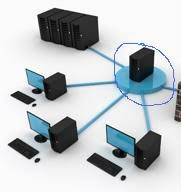It was the decade of the mega-heist, when stolen credit card magstripe tracks became the pork bellies of a new underground marketplace, Eastern European hackers turned malware writing into an art, and a nasty new crop of purpose-driven computer worms struck dread in the heart of America.
Now that the zero days are behind us, it’s time to reflect on the most ingenious, destructive or groundbreaking cybercrimes of the first 10 years of the new millennium.
Mafiaboy 2000 Once upon a time, “distributed denial of service attacks” were just a way for quarreling hackers to knock each other out of IRC. Then one day in February 2000, a 15-year-old Canadian named Michael “MafiaBoy” Calce experimentally programmed his botnet to hose down the highest traffic websites he could find. CNN, Yahoo, Amazon, eBay, Dell and eTrade all buckled under the deluge, leading to national headlines and an emergency meeting of security experts at the White House.
Compared to modern DDoS attacks, MafiaBoy’s was trivial. But his was the cyberstrike that put the internet’s security issues on a national stage, and inaugurated an era where any pissed off script kiddy could take down part of the web at will.
2002
California Payroll Database Breach
On April 5, 2002, an unidentified hacker penetrated a California server housing the state government’s payroll database, gaining access to names, Social Security numbers and salary information for 265,000 state workers from the governor on down. The breach itself was small potatoes, but when it emerged that the California Controller’s Office had waited two weeks to warn the victims, angry lawmakers reacted by passing the nation’s first breach disclosure law, SB1386.
The law requires hacked organizations to promptly warn potential identity theft victims. Its passage pulled the rock off the string of major corporate breaches that companies would have preferred to hush up. Today, 45 states have enacted similar laws.
2003
Slammer
In 2003, fear came in 376 bytes. The lightning-fast Slammer worm targeted a hole in Microsoft’s SQL server, and despite striking six months after a fix was released, the malware cracked an estimated 75,000 unpatched servers in the space of hours. Bank of America and Washington Mutual ATM networks ground to a halt. Continental Airlines delayed and canceled flights when its ticketing system got gummed up. Seattle lost its emergency 911 network, and a nuclear power plant in Ohio lost a safety monitoring system.
Slammer wasn’t the biggest worm ever, but in its aggressive, relentless spread, it exposed the secret interconnections that corporations were foolishly allowing between important private networks and the public internet.
2004
Foonet
Jay Echouafni
Years before there was a Russian Business Network, a small ISP hosted in a suburban basement in Ohio gained the dubious reputation as the first black-hat hosting company. It was a safe spot for hackers and packet monkeys to attack an unsuspecting internet. Foonet’s hosted clients included Carder Planet — the dedicated “carder forum” for credit card hackers — and its IRC servers were where legendary German hacker Axel “Ago” Gembe controlled his Agobot network of compromised Windows boxes.
2006
The Los Angeles Traffic Signal Attack
When Los Angeles traffic engineers went on strike in August 2006, the city decided not to take any chances: They temporarily blocked most access to the computer that controls 3,200 traffic signals throughout the City of Angels. Two of the striking engineers hacked in anyway. From a laptop, Kartik Patel and Gabriel Murillo picked four key intersections and changed the timing on the traffic signals so the most congested approach would hit long red lights.
The timing tweaks wreaked havoc in a city already flirting with gridlock, according to the Los Angeles Times, snarling traffic at the Los Angeles International Airport, backing up the Glendale Freeway and paralyzing Little Tokyo and the streets of the downtown Civic Center.
Monday, January 4, 2010
Subscribe to:
Comments (Atom)
